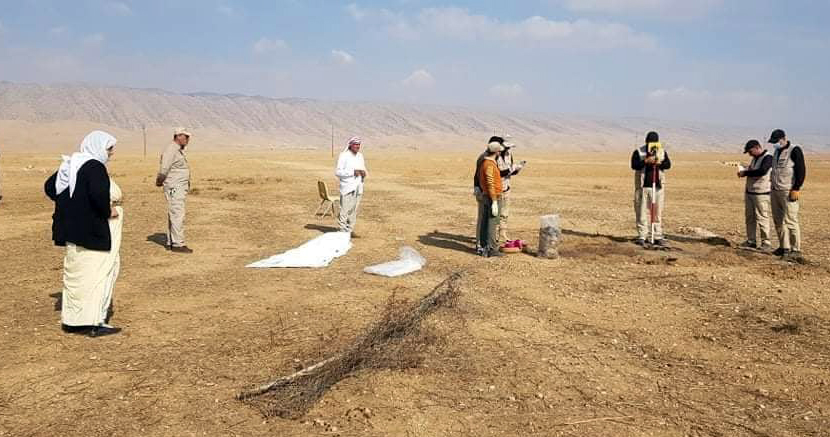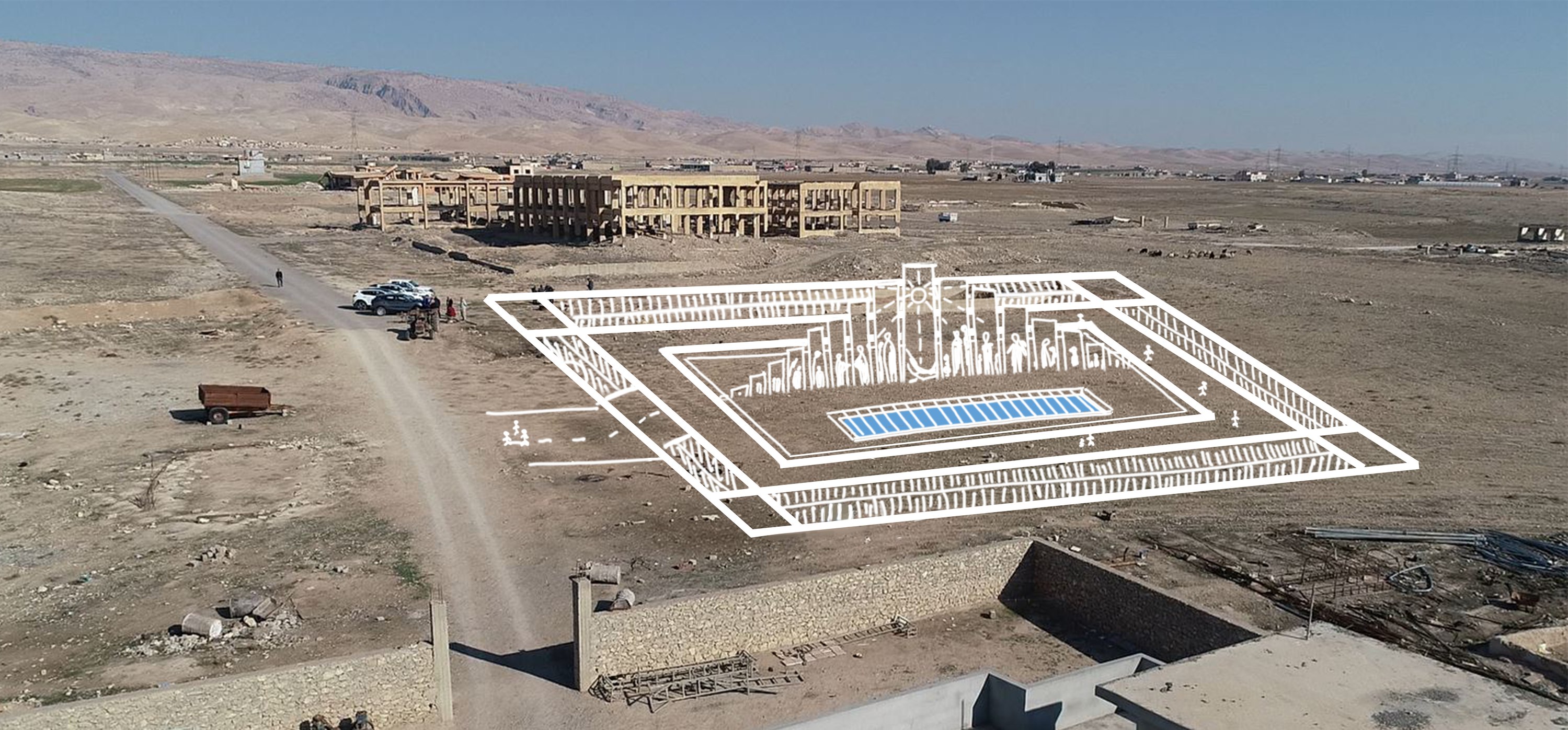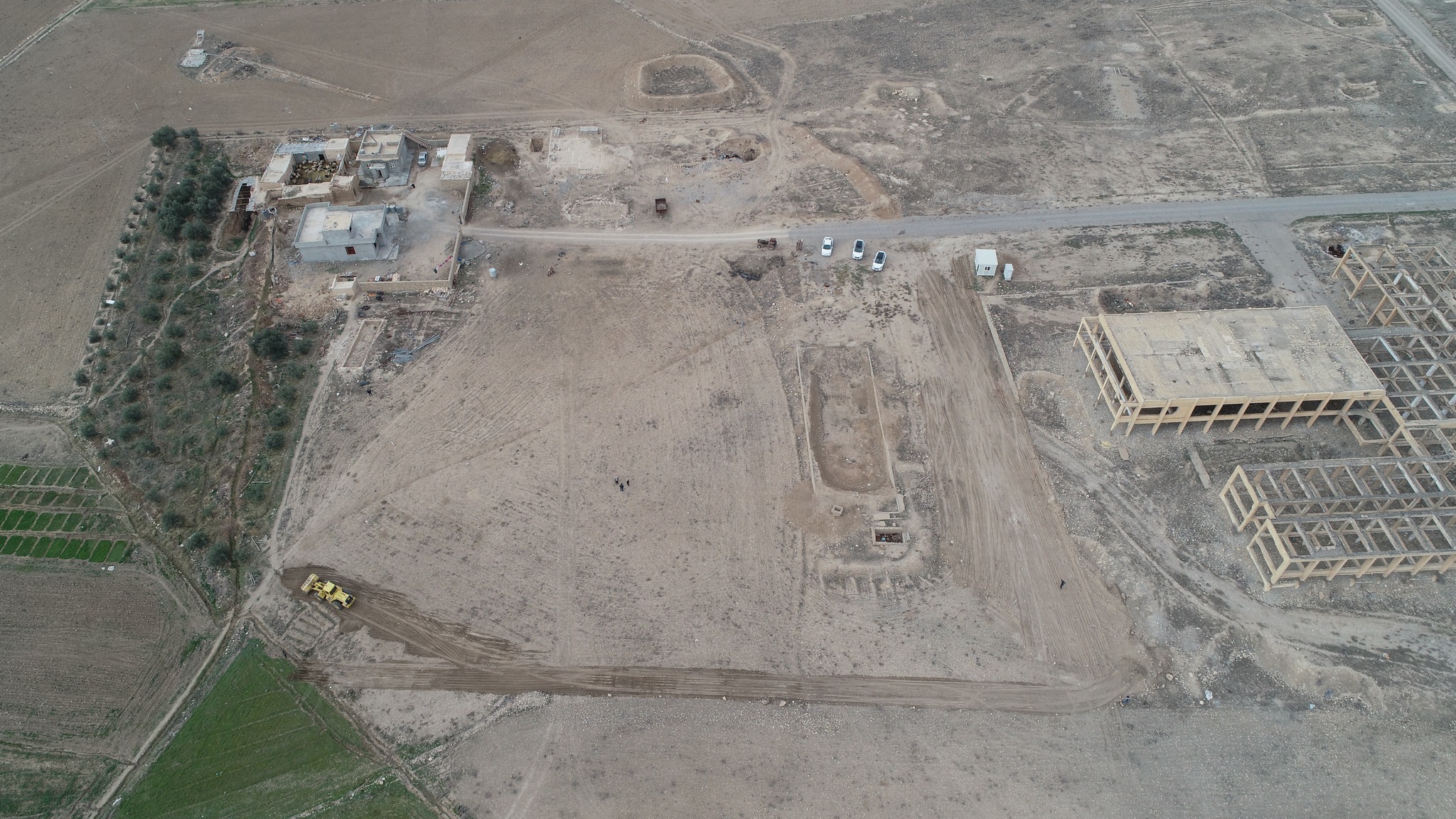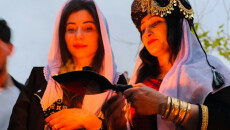The process of building a cemetery and memorial in Solagh and Shingal (Sinjar), home to the Ezidi (Yazidi) ethno-religious community, has officially begun as the Ezidi community in Iraq continues to rebuild in the wake of genocide at the hands of the extremist militants.
Launched by Nadia’s Initiative (NI) in 2021 in response to requests from the Yazidi community, NI spent the last two years designing the cemetery and memorial in partnership with community members and a Yazidi architect.
This week, construction is officially underway with support from the International Organization for Migration (IOM) in Iraq and the United States Agency for International Development (USAID).
“Grief is part of the healing process,” said Nadia Murad, founder and president of Nadia’s Initiative. “Having a place to collectively mourn and remember our families, friends, and neighbors is vital for survivors, especially those who have returned to Sinjar. It also serves an educational purpose – reminding the world of what our community suffered, and how we must continue to focus on preventing such atrocities.”
Nadia Murad is an Ezidi survivor of ISIS, human rights' activist and Nobel Peace Prize winner.
Nadia’s Initiative is an international NGO dedicated to rebuilding communities in crisis and advocating globally for survivors of sexual violence. Its current work is focused on the sustainable redevelopment of the Yazidi homeland in Sinjar, Iraq.
Nadia’s Initiative works with the local community and a variety of implementing partners on the ground in Sinjar to design and support projects that promote the restoration of education, healthcare, livelihoods, WASH (water, sanitation, and hygiene), culture, and women’s empowerment in the region.
“This cemetery will be the first project of this scale documenting the Yazidi genocide. It will be a historical landmark for future generations and will visually demonstrate the magnitude of the genocide and its impact on our community,” says Khaled Talo Khedr, community member and relative of Solagh victim.
“Establishing a symbolic mass grave will attract the attention of public figures and those who are interested in human rights and justice issues.”

In August 2014, Daesh took over Shingal and took 6417 Ezidis as captives and sex slaves, mainly women and children. Up today, 2781 of them are missing and brought to unknown destiny, the Kurdistan Regional Government’s KRG office for rescue of the abducted Ezidis.
Ezidis are a non-Muslim ethno-religious minority of about 550,000 people, mostly residing in Shingal, in northern Iraqi province of Nineveh. The militants of Daesh extremist group in 2014 attacked their communities, killing thousands of men and taking thousands of women and children, in an atrocity the U.N. said amounted to genocide.
IS reportedly used the women and girls as sex slaves. Tens of thousands of Ezidis are still living in Internally Displaced Person IDP camps in Iraqi northern province of Duhok.
Amid the atrocious attacks of IS, 1,293 Ezidis were killed, 68 shrines were destroyed and over 80 mass graves have been discovered.
“When a community has experienced this degree of trauma and devastation, memorializing the past and paying tribute to lost loved ones become essential components of efforts to support survivors as they return home from displacement,” said IOM Iraq Chief of Mission, Giorgi Gigauri.
“This is what we are endeavoring to do here – a memorial by and for the community, that is also consistent with the provisions enshrined in the Yazidi Survivors Law, which IOM and Nadia’s Initiative have worked to support from its inception, and to which we remain committed as the reparations roll-out continues.”
IOM is the leading intergovernmental organization in the field of migration, working in cooperation with the Government of Iraq, the Kurdistan Regional Government, civil society organizations and international partners to provide support across the country’s 18 governorates.
As part of its multi-sectoral response covering camp management and camp coordination, shelter and infrastructure rehabilitation, healthcare, mental health and psychosocial support, livelihood assistance, policy development and more, IOM plays a key role in advancing a trauma-informed, survivor-centered transitional justice process in Iraq.

Nineveh, February 2023: An example of the design of the monument in Shingal. IOM
Memorializing the victims of genocide is essential to the Yazidi community, many of whom remain displaced within Iraq more than eight years later. The final design for the cemetery and memorial was selected through extensive consultations with survivors both displaced and returned and aims not only to honor those who were lost, but also to act as a catalyst for the collective healing of a people, community, and region that has withstood incredible trauma.
This is the first memorialization project of this size and scope to be implemented in Sinjar. It will serve as a place of solace and remembrance for the greater Yazidi community.
"The design aims not only to commemorate the victims, but also to facilitate the collective healing of people, communities and regions that have suffered extreme violence," the IOM said in a statement.
This report has been shared by the International Organization for Migration IOM and Nadia’s Initiative NI with KirkukNow.






